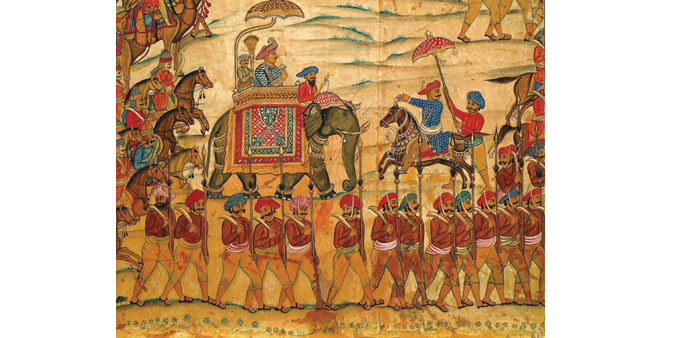MIA will showcase The Tiger’s Dream: Tipu
Sultan, a historic perspective on the life
and times of the erstwhile Mysore ruler.
By Anand Holla
Paintings and artefacts related to Tipu Sultan, the erstwhile South Indian ruler of the kingdom of Mysore, have enjoyed much admiration all over; be it Victoria & Albert Museum in London or Sotheby’s. Come September and the Museum of Islamic Art, Doha, will play host to The Tiger’s Dream: Tipu Sultan, an exhibition that explores the life and times of the controversial statesman.
The exhibition, which opens on September 29 and will go on till January 24, 2015, is drawn entirely from the MIA collection and features several objects which have never been displayed in Qatar.
The Tiger of Mysore, or Tippoo Sahib, as the British called him, reigned from 1782 to 1799. The eldest son of Hyder Ali, ruler of the Indian state of Mysore, Sultan was born and raised in Devanhalli, where was trained in the art of warfare.
Hyder Ali had aggressively expanded his domains, using his French-trained army to defeat the Marathas, the rulers of the Carnatic and other Indian powers. Sultan, a fast learner, would borrow his father’s zeal and take charge of the First and Second Mysore Wars (1767-69, 1780-84).
Though Sultan sided with the French and resisted the British East India Company’s conquest of southern India, his legacy remains controversial. While a sizeable number of Indians consider him a hero, many others call him a tyrant and a brutal ruler. In India, Sultan is still an enigma that fuels lengthy debates and is known as a modern historian’s biggest puzzle.
The charismatic ruler is known for quotes such as: “One day’s life of a lion is preferable to hundred years’ of a jackal.” On May 4, 1799, at the Battle of Seringapatam – the final confrontation of the Fourth Anglo-Mysore War, the British troops killed him.
Sultan’s love for tigers saw him keep six of them in his fortress-city of Seringapatam (now Srirangapatna) in Mysore, where his throne was shaped and striped like a tiger. In fact, Tipu’s Tiger or The Musical Tiger, a carved and lacquered wooden, life-sized semi-automaton in the shape of a tiger mauling a prostate British officer complete with sound effects of the animal’s growls and the victim’s screams, was the ruler’s favourite toy, and is now in the Victoria & Albert Museum.
The exhibition’s centrepiece is a group of 24 paintings showing Sultan’s victory at the Battle of Pollilur in India, his finest hour as he defeated the British, in 1780. The vivid pictorial accounts depict the famous battle at which the East India Company army surrendered to Tipu Sultan and his father Hyder Ali. The British troops suffered a high number of casualties, representing one of the worst defeats the British suffered on the subcontinent.
Interestingly, this is only the second time that these paintings have been shown as a cycle in the last 30 years, and the first time since they were divided that they will be reconstituted as one piece, using digital imaging. Alongside this unique group is a selection of objects which reflect Tipu’s image as the Tiger of Mysore.

